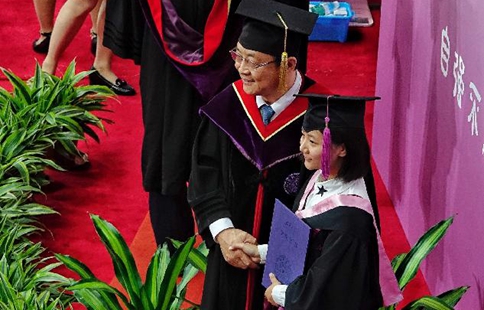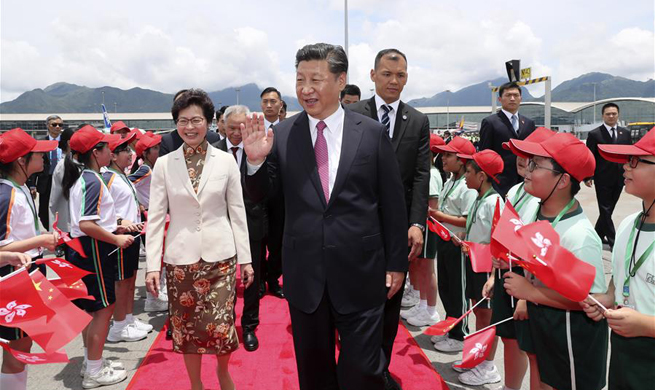BEIJING, July 3 (Xinhua) -- A private survey has shown that China's manufacturing activity expanded to a three-month high, adding to evidence that the economy is stable despite headwinds at home and abroad.
The Caixin China General Manufacturing Managers' Index (PMI) beat market expectations to hit 50.4 in June, up from 49.6 in May, according to data released Monday by financial information service provider Markit and Caixin Media.
A reading above 50 indicates expansion, while below represents contraction.
Caixin said the pick-up was supported by stronger production and new orders, prompting companies to increase their purchasing activity, even as muted client demand led manufacturers to reduce their inventory holdings and trim employment.
Faster growth in new orders helped lift the headline manufacturing PMI. Though marginal, the increase in new orders was the quickest for three months. New export orders index also picked up slightly.
The data confirmed results of an official survey, which focuses on a bigger sample pool of larger manufacturers.
The official manufacturing PMI rose to 51.7 in June, accelerating from 51.2 in May, marking a three-month high, data from the National Bureau of Statistics showed Friday.
June's official non-manufacturing PMI also improved to 54.9 from 54.5 in May, evidence of a better economic structure. China has been trying to shift its economy toward a growth model that draws strength from consumption, services and innovation. The service sector accounted for more than half of the Chinese economy last year.
Lifted by the Caixin PMI data, the benchmark Shanghai Composite Index edged up 0.11 percent Monday to end at 3,195.91 points, the highest level in more than two months.
Analysts said the PMI data indicated momentum in June, mitigating concerns that an economic rebound starting late last year might have been losing steam while over-tightening of the deleveraging process could de-stabilize growth.
UBS economist Wang Tao expects June data due for release next week to show industrial production growth unchanged from May, property sales resilient, fixed-asset investment slightly higher and exports solid, despite recent regulatory tightening.
UBS expects China's GDP growth to edge down to 6.8 percent in the second quarter of the year.
Slower credit growth due to China's supervisory tightening could lead to weaker fixed-asset investment and activities later in the year, while softening property sales amid policy tightening may also weigh on construction by the end of the year, said Wang, who expects China's GDP to grow 6.7 percent this year.
GDP grew 6.9 percent in the first quarter of the year, up from 6.8 percent the previous quarter. The government has targeted annual growth of around 6.5 percent for 2017.
Last week, while addressing the opening ceremony of the Annual Meeting of the New Champions 2017, Premier Li Keqiang said the overall trajectory of stability and growth would remain unchanged, and "we are fully capable of fulfilling this year's main targets and tasks of development."
It is widely expected that growth will be moderate for the rest of the year, and a steep decline is not likely due to a buttressing effect from reforms and burgeoning new growth drivers.
The Chinese Academy of Social Sciences, a government think tank, expects the economy to grow 6.7 percent, 6.6 percent and 6.5 percent in the second, third and fourth quarters, respectively.
















